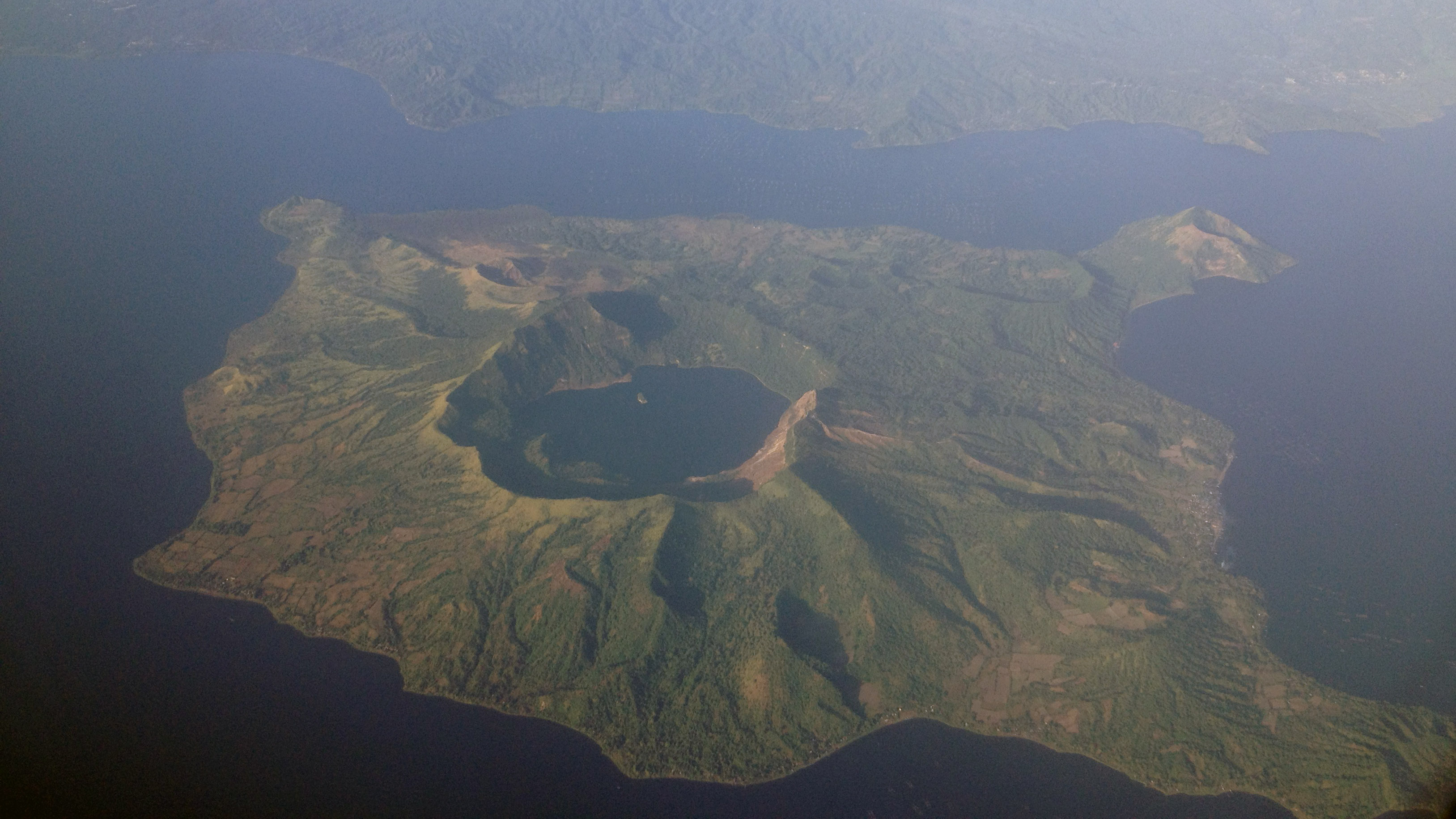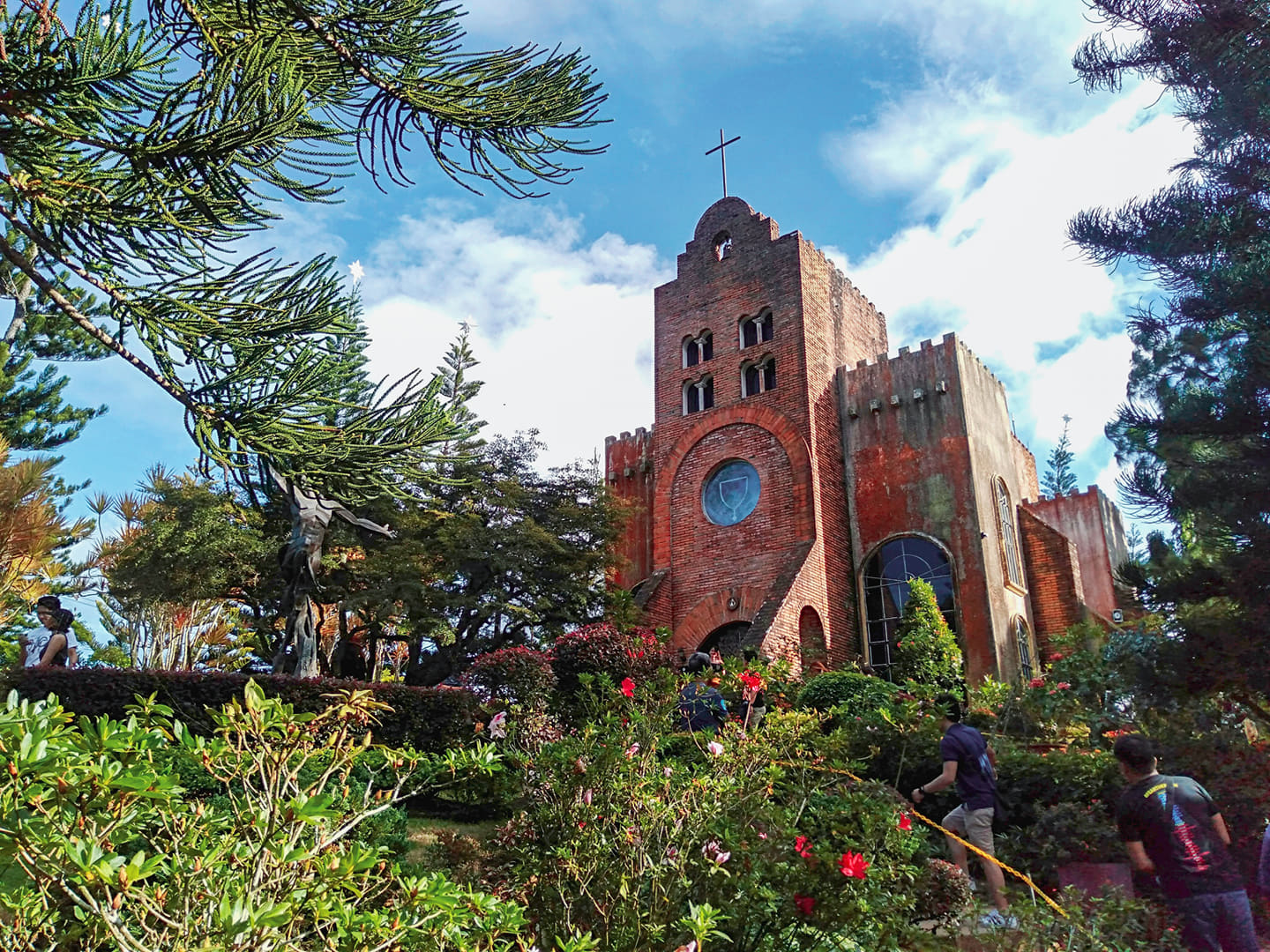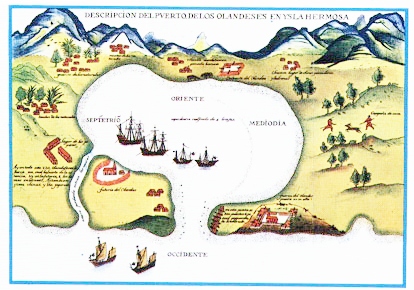|
Punta Fuego
Fuego Point, commonly known as Punta Fuego, is a flame-shaped headland located in western Batangas province on the island of Luzon in the Philippines. It extends as a long promontory into the South China Sea overlooking Fortune Island and Nasugbu and Calayo bays in the municipality of Nasugbu. It is home to the exclusive Club Punta Fuego and Peninsula de Punta Fuego resort and seaside community. Geography Punta Fuego is moderately high and rocky, with an islet off its north side. Two other islets, connected by a reef, lie southeast of the point and have a pinnacle rock, awash at low water, on their eastern side. The 88-hectare residential resort has several private beaches, a golf course, marina and a heliport developed in 1995 by Landco Pacific and Roxaco Land. The entire area is administered as part of the Nasugbu ''barangay'' of Balaytigue. History Punta Fuego was the site of the ''Battle of San Diego'' between the Spanish and Dutch forces in the prelude to the Battles of La ... [...More Info...] [...Related Items...] OR: [Wikipedia] [Google] [Baidu] |
Calabarzon
Calabarzon (), formally known as the Southern Tagalog Mainland, is an administrative region in the Philippines, designated as Region IV-A. The region comprises five provinces: Batangas, Cavite, Laguna, Quezon, and Rizal; and one highly urbanized city, Lucena. The region is the most populous region in the Philippines according to the Philippine Statistics Authority, having over 14.4 million inhabitants in 2020, and is also the country's second most densely populated after the National Capital Region. The region is situated southeast of Metro Manila, and is bordered by the Manila Bay to the west, Lamon Bay and the Bicol Region to the east, the Tayabas Bay and Sibuyan Sea to the south, and Central Luzon to the north. It is home to places like Mount Makiling near Los Baños, Laguna, and the Taal Volcano in Batangas. Prior to its creation as a region, Calabarzon, together with the Mimaropa region, the province of Aurora and several parts of Metro Manila, formed the historical ... [...More Info...] [...Related Items...] OR: [Wikipedia] [Google] [Baidu] |
Batangas
Batangas, officially the Province of Batangas ( tl, Lalawigan ng Batangas ), is a province in the Philippines located in the Calabarzon region on Luzon. Its capital is the city of Batangas, and is bordered by the provinces of Cavite and Laguna to the north, and Quezon to the east. Across the Verde Island Passages to the south is the island of Mindoro and to the west lies the South China Sea. Poetically, Batangas is often referred to by its ancient name Kumintáng. Batangas is one of the most popular tourist destinations near Metro Manila. It is home to the well-known Taal Volcano, one of the Decade Volcanoes, and Taal Heritage town, a small town that has ancestral houses and structures dating back to the 19th century. The province also has numerous beaches and diving spots including Anilao in Mabini, Sombrero Island in Tingloy, Ligpo Island and Sampaguita Beach in Bauan, Matabungkay in Lian, Punta Fuego in Nasugbu, Calatagan and Laiya in San Juan. All of the mar ... [...More Info...] [...Related Items...] OR: [Wikipedia] [Google] [Baidu] |
Nasugbu
Nasugbu, officially the Municipality of Nasugbu ( tgl, Bayan ng Nasugbu), is a 1st class municipality of the Philippines, municipality in the Philippine Province, province of Batangas, Philippines. According to the 2020 census, it has a population of 136,524 people. Several bus services provide transportation to and from Nasugbu. Jeepneys from Tagaytay also enter and leave the town at a scheduled time. Within the town, tricycles are the main mode of transport. Etymology According to legend, a group of Spanish people, Spanish soldiers was allowed by their commander to go on a sightseeing tour of the friendlier villages on the western coast of Batangas. The group came upon a native couple cooking rice in a ''palayok'' (clay pot), the lid of which rattled over the steaming rice. In Spanish, the group leader asked the woman: ''"¿Cómo se llama este pueblo?"'' ("What is this place called?") The woman, who knew no Spanish, thought that the stranger was asking about her pot of rice ... [...More Info...] [...Related Items...] OR: [Wikipedia] [Google] [Baidu] |
Luzon
Luzon (; ) is the largest and most populous island in the Philippines. Located in the northern portion of the Philippines archipelago, it is the economic and political center of the nation, being home to the country's capital city, Manila, as well as Quezon City, the country's most populous city. With a population of 64 million , it contains 52.5% of the country's total population and is the fourth most populous island in the world. It is the 15th largest island in the world by land area. ''Luzon'' may also refer to one of the three primary island groups in the country. In this usage, it includes the Luzon mainland, the Batanes and Babuyan groups of islands to the north, Polillo Islands to the east, and the outlying islands of Catanduanes, Marinduque and Mindoro, among others, to the south. The islands of Masbate, Palawan and Romblon are also included, although these three are sometimes grouped with another of the island groups, the Visayas. Etymology The name ''Luz ... [...More Info...] [...Related Items...] OR: [Wikipedia] [Google] [Baidu] |
Philippines
The Philippines (; fil, Pilipinas, links=no), officially the Republic of the Philippines ( fil, Republika ng Pilipinas, links=no), * bik, Republika kan Filipinas * ceb, Republika sa Pilipinas * cbk, República de Filipinas * hil, Republika sang Filipinas * ibg, Republika nat Filipinas * ilo, Republika ti Filipinas * ivv, Republika nu Filipinas * pam, Republika ning Filipinas * krj, Republika kang Pilipinas * mdh, Republika nu Pilipinas * mrw, Republika a Pilipinas * pag, Republika na Filipinas * xsb, Republika nin Pilipinas * sgd, Republika nan Pilipinas * tgl, Republika ng Pilipinas * tsg, Republika sin Pilipinas * war, Republika han Pilipinas * yka, Republika si Pilipinas In the recognized optional languages of the Philippines: * es, República de las Filipinas * ar, جمهورية الفلبين, Jumhūriyyat al-Filibbīn is an archipelagic country in Southeast Asia. It is situated in the western Pacific Ocean and consists of around 7,641 islands t ... [...More Info...] [...Related Items...] OR: [Wikipedia] [Google] [Baidu] |
South China Sea
The South China Sea is a marginal sea of the Western Pacific Ocean. It is bounded in the north by the shores of South China (hence the name), in the west by the Indochinese Peninsula, in the east by the islands of Taiwan and northwestern Philippines (mainly Luzon, Mindoro and Palawan), and in the south by Borneo, eastern Sumatra and the Bangka Belitung Islands, encompassing an area of around . It communicates with the East China Sea via the Taiwan Strait, the Philippine Sea via the Luzon Strait, the Sulu Sea via the straits around Palawan (e.g. the Mindoro and Balabac Straits), the Strait of Malacca via the Singapore Strait, and the Java Sea via the Karimata and Bangka Straits. The Gulf of Thailand and the Gulf of Tonkin are also part of the South China Sea. The shallow waters south of the Riau Islands are also known as the Natuna Sea. The South China Sea is a region of tremendous economic and geostrategic importance. One-third of the world's maritime shipping passe ... [...More Info...] [...Related Items...] OR: [Wikipedia] [Google] [Baidu] |
Fortune Island (Philippines)
Fortune Island is a resort island of Batangas province in the Philippines. The island lies about off the coast of Nasugbu in Batangas. Ownership and development Fortune Island was once a private island owned by Laurentina Pestano. It was turned over to the government and the island is now owned by José Antonio Leviste, a former governor of Batangas. Leviste opened the Fortune Island Resort Club on the island in 1995. The beach resort was built along a stretch of pristine white sand. Several rest houses face the water. The resort features a salt water swimming pool, clubhouse, cabana, basketball court, helipad, desalinator for freshwater consumption, and a small serpentarium, a reptile zoo for snakes. The beach also has an acropolis with Grecian pillars and statues on the edge of the island overlooking the sea. There is also a museum dedicated to the San Diego, a Spanish warship that sank off the island (see below). This island has since been parceled out into seven lots ... [...More Info...] [...Related Items...] OR: [Wikipedia] [Google] [Baidu] |
Calayo
Nasugbu, officially the Municipality of Nasugbu ( tgl, Bayan ng Nasugbu), is a 1st class municipality in the province of Batangas, Philippines. According to the 2020 census, it has a population of 136,524 people. Several bus services provide transportation to and from Nasugbu. Jeepneys from Tagaytay also enter and leave the town at a scheduled time. Within the town, tricycles are the main mode of transport. Etymology According to legend, a group of Spanish soldiers was allowed by their commander to go on a sightseeing tour of the friendlier villages on the western coast of Batangas. The group came upon a native couple cooking rice in a ''palayok'' (clay pot), the lid of which rattled over the steaming rice. In Spanish, the group leader asked the woman: ''"¿Cómo se llama este pueblo?"'' ("What is this place called?") The woman, who knew no Spanish, thought that the stranger was asking about her pot of rice. ''"Nasubo na po iyan, eh, kaya ganyan"'' ("The rice has started to b ... [...More Info...] [...Related Items...] OR: [Wikipedia] [Google] [Baidu] |
Nasugbu, Batangas
Nasugbu, officially the Municipality of Nasugbu ( tgl, Bayan ng Nasugbu), is a 1st class municipality of the Philippines, municipality in the Philippine Province, province of Batangas, Philippines. According to the 2020 census, it has a population of 136,524 people. Several bus services provide transportation to and from Nasugbu. Jeepneys from Tagaytay also enter and leave the town at a scheduled time. Within the town, tricycles are the main mode of transport. Etymology According to legend, a group of Spanish people, Spanish soldiers was allowed by their commander to go on a sightseeing tour of the friendlier villages on the western coast of Batangas. The group came upon a native couple cooking rice in a ''palayok'' (clay pot), the lid of which rattled over the steaming rice. In Spanish, the group leader asked the woman: ''"¿Cómo se llama este pueblo?"'' ("What is this place called?") The woman, who knew no Spanish, thought that the stranger was asking about her pot of rice ... [...More Info...] [...Related Items...] OR: [Wikipedia] [Google] [Baidu] |
Barangay
A barangay (; abbreviated as Brgy. or Bgy.), historically referred to as barrio (abbreviated as Bo.), is the smallest administrative division in the Philippines and is the native Filipino term for a village, district, or ward. In metropolitan areas, the term often refers to an inner city neighborhood, a suburb, or a suburban neighborhood or even a borough. The word ''barangay'' originated from ''balangay'', a type of boat used by a group of Austronesian peoples when they migrated to the Philippines. Municipalities and cities in the Philippines are politically subdivided into barangays, with the exception of the municipalities of Adams in Ilocos Norte and Kalayaan in Palawan, with each containing a single barangay. Barangays are sometimes informally subdivided into smaller areas called ''purok'' ( en, "wikt:zone, zone"), or barangay zones consisting of a cluster of houses for organizational purposes, and ''sitios'', which are territorial enclaves—usually rural—far from t ... [...More Info...] [...Related Items...] OR: [Wikipedia] [Google] [Baidu] |
Battles Of La Naval De Manila
The Battles of La Naval de Manila ( es, Batallas de las marinas de Manila) were a series of five naval battles fought in the waters of the Spanish East Indies in the year 1646, in which the forces of the Spanish Empire repelled various attempts by forces of the Dutch Republic to invade Manila, during the Eighty Years' War. The Spanish forces, which included many native volunteers, consisted of two, and later, three Manila galleons, a galley and four brigantines. They neutralized a Dutch fleet of nineteen warships, divided into three separate squadrons. Heavy damage was inflicted upon the Dutch squadrons by the Spanish forces, forcing the Dutch to abandon their invasion of the Philippines. The victories against the Dutch invaders were attributed by the Spanish troops to the intercession of the Virgin Mary under the title of Our Lady of La Naval de Manila. On 9 April 1652, the victories in the five sea battles were declared a miracle by the Archdiocese of Manila after a thorough ... [...More Info...] [...Related Items...] OR: [Wikipedia] [Google] [Baidu] |
San Diego (ship)
The galleon ''San Diego'' was built as the trading ship ''San Antonio'' before hastily being converted into a warship of the Spanish Navy. On December 14, 1600, the fully laden ''San Diego'' was engaged by the Dutch warship ''Mauritius'' under the command of Admiral Olivier van Noort a short distance away from Fortune Island, Nasugbu, Philippines. Since ''San Diego'' couldn't handle the extra weight of her cannons, which led to a permanent list and put the cannon portholes below sea level, she was sunk without firing a single shot in response. The Dutch were later reported firing upon and hurling lances at the survivors attempting to climb aboard the ''Mauritius''. Nearly 400 years later, in 1992, the wreck was discovered by French underwater archaeologist Franck Goddio and a total of 34,407 artifacts and ecofacts were recovered from the shipwreck, including Chinese porcelain, Japanese katanas, Portuguese cannon and Mexican coin. The ''San Diego'' exhibition toured the globe befo ... [...More Info...] [...Related Items...] OR: [Wikipedia] [Google] [Baidu] |


.jpg)


